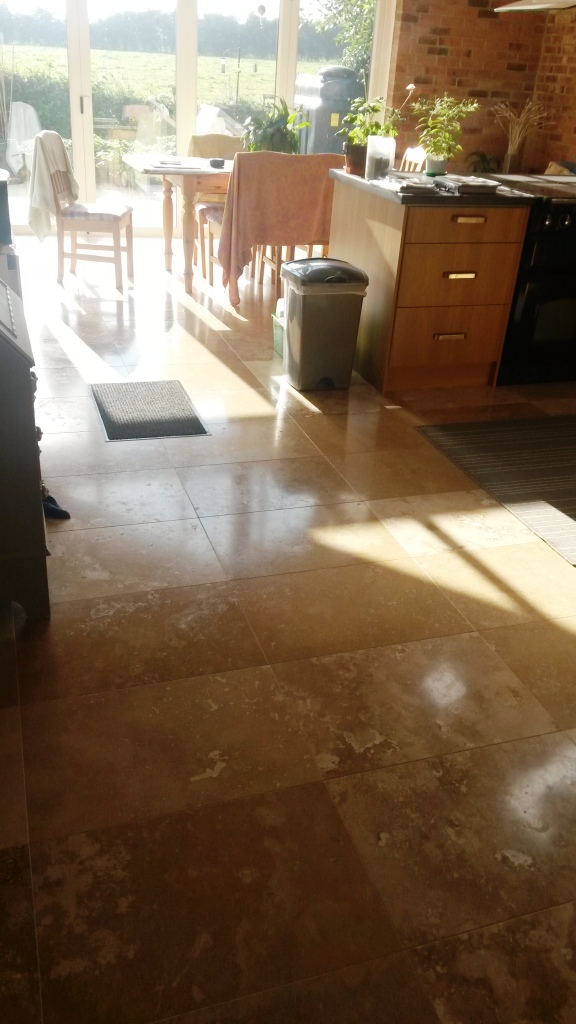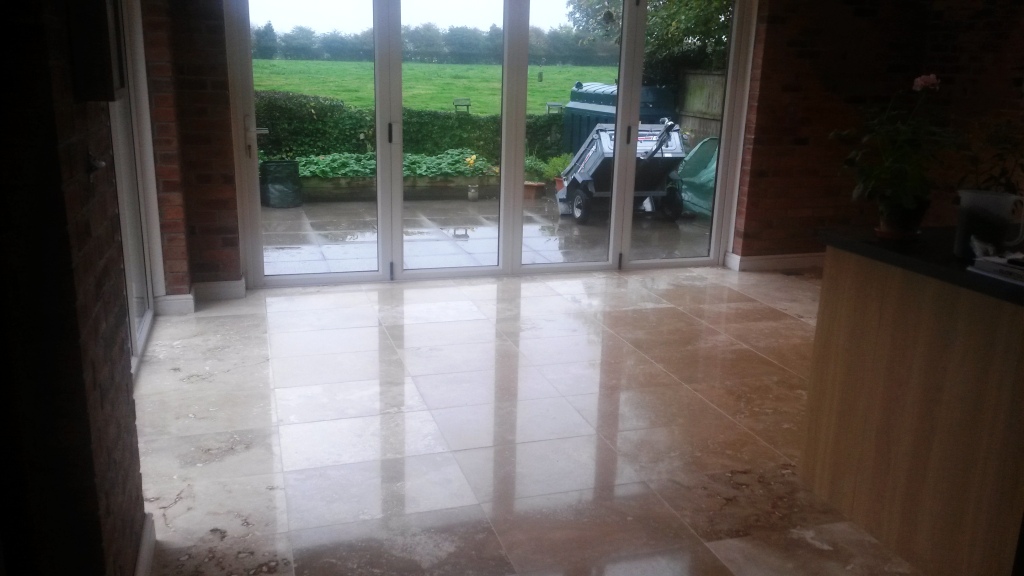While popular and highly coveted due to its natural brown colouring, Travertine is not as tough as other types of natural stone and thus needs regular maintenance if you wish to keep it looking good. Without it the polish can quickly dull, and can suffer from erosion over time if acidic cleaning products are used often resulting in small holes or pitting appearing.
This house in the Manchester suburb of Didsbury had a particularly large area of Travertine tiles which had proven to be very difficult for the property owner to maintain. When I spoke to her I explained that Tile Doctor have a reliable process for the restoration of Travertine and similar types of natural stone such as Marble and Limestone using a polishing process we have developed called burnishing, and I assured her that we could achieve the same with her floor.

Cleaning and Polishing Travertine Tiles
Tile Doctor’s burnishing system involves the application of four different diamond encrusted burnishing pads in sequence from coarse to fine, using a small amount of water with each pad for lubrication.

I started work on this Travertine by applying a Coarse 400 grit burnishing pad to strip away dirt and any old sealer remaining on the tiles, before removing any dirty water with a wet vac machine and rinsing the floor (a process which is repeated after the application of each pas). Next, I moved on to the Medium 800 grit pad, which I used to break down any ingrained dirt and stubborn marks, and to start smoothing down the rough and uneven surface that had developed on some of the tiles. I then used the Fine 1500 grit pad to smooth the surface even further and get the floor ready for its final polishing.
However, before applying the fourth and final pad, I took the time to carefully fill all the cracks and holes as these were spoiling the overall appearance of the tiles. Following this I left the floor for the day so it could dry off fully overnight.
Sealing Travertine Tiles
I returned to the property the next morning to seal the floor. My first course of action was to run a damp test; which we do in every situation as even a small amount of damp threatens to spoil the sealer. The test did reveal some damp spots, so I used my heat gun to dry them out quickly.
Once the floor was completely dry, I went over the floor with the Very Fine 300 grit pad, without any water as lubricant this time, to achieved the final desired polish. In this situation, I used Tile Doctor Colour Grow to seal the tiles as I knew it would enhance the natural shades in the Travertine. Colour Grow is a solvent based colour intensifying sealer that provides durable surface protection while allowing the surface to breath and enhance colour.
It’s really important that all excess sealer – that which doesn’t penetrate the stone – is polished off. For polishing off the excess, I used our three cloth system. After completing the sealing process, I went over the floor one final time with the Very Fine 3000 grit diamond burnishing pad to ensure a smooth and shiny finish.

Needless to say, the customer was very happy with result, remarking that the floor never looked that good before!

Source: Travertine Cleaning and Polishing Service in Greater-Manchester
